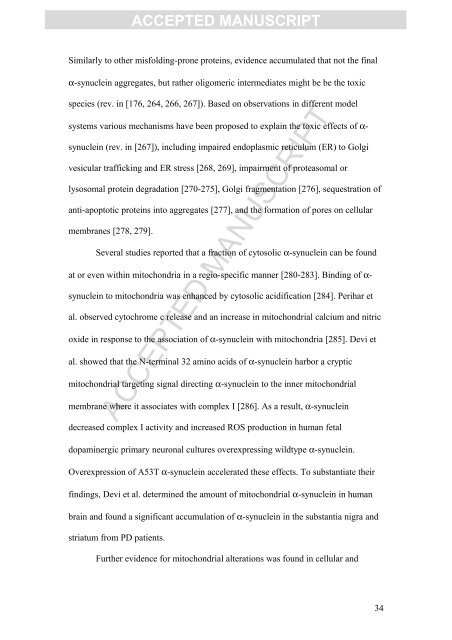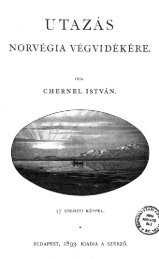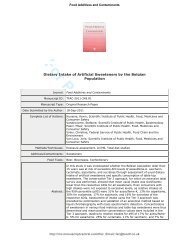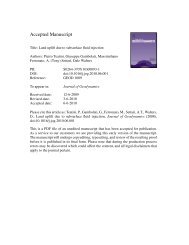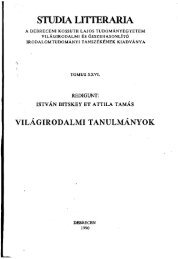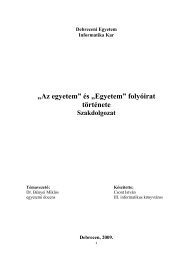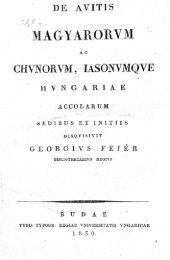accepted manuscript
accepted manuscript
accepted manuscript
You also want an ePaper? Increase the reach of your titles
YUMPU automatically turns print PDFs into web optimized ePapers that Google loves.
ACCEPTED MANUSCRIPT<br />
Similarly to other misfolding-prone proteins, evidence accumulated that not the final<br />
α-synuclein aggregates, but rather oligomeric intermediates might be be the toxic<br />
species (rev. in [176, 264, 266, 267]). Based on observations in different model<br />
systems various mechanisms have been proposed to explain the toxic effects of α-<br />
synuclein (rev. in [267]), including impaired endoplasmic reticulum (ER) to Golgi<br />
vesicular trafficking and ER stress [268, 269], impairment of proteasomal or<br />
lysosomal protein degradation [270-275], Golgi fragmentation [276], sequestration of<br />
anti-apoptotic proteins into aggregates [277], and the formation of pores on cellular<br />
membranes [278, 279].<br />
Several studies reported that a fraction of cytosolic α-synuclein can be found<br />
at or even within mitochondria in a regio-specific manner [280-283]. Binding of α-<br />
synuclein to mitochondria was enhanced by cytosolic acidification [284]. Perihar et<br />
al. observed cytochrome c release and an increase in mitochondrial calcium and nitric<br />
oxide in response to the association of α-synuclein with mitochondria [285]. Devi et<br />
al. showed that the N-terminal 32 amino acids of α-synuclein harbor a cryptic<br />
mitochondrial targeting signal directing α-synuclein to the inner mitochondrial<br />
membrane where it associates with complex I [286]. As a result, α-synuclein<br />
ACCEPTED MANUSCRIPT<br />
decreased complex I activity and increased ROS production in human fetal<br />
dopaminergic primary neuronal cultures overexpressing wildtype α-synuclein.<br />
Overexpression of A53T α-synuclein accelerated these effects. To substantiate their<br />
findings, Devi et al. determined the amount of mitochondrial α-synuclein in human<br />
brain and found a significant accumulation of α-synuclein in the substantia nigra and<br />
striatum from PD patients.<br />
Further evidence for mitochondrial alterations was found in cellular and<br />
34


